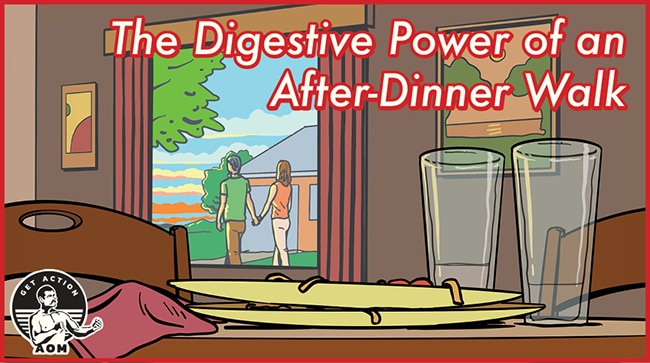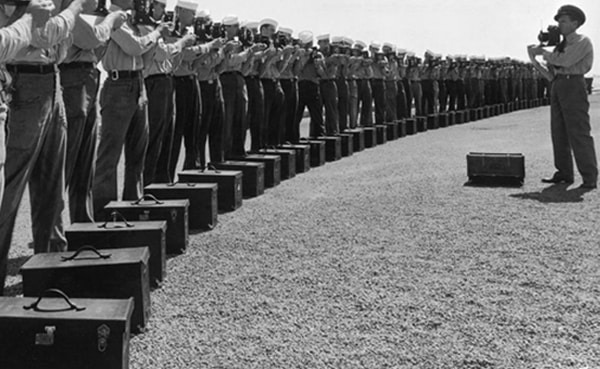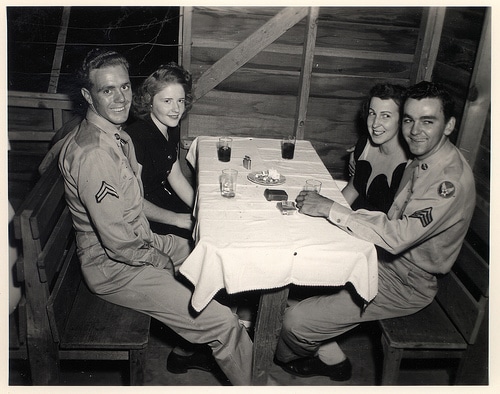
For centuries, when someone referred to “dinner,” they meant a meal, the largest of the day, which was eaten around noon. A lighter “supper” was then consumed in the evening.
Starting in the 18th century and accelerating in the 19th and 20th, the hour at which dinner was eaten moved later and later in the day. This shift occurred for various reasons: later dinners became fashionable; electric lights facilitated dining after dark; and with more men working away from home and not returning until after 5 p.m., an evening dinner allowed the entire family to reconvene for a meal together.
Today, dinner remains the largest meal of the day but is typically eaten around 6:00-7:00 p.m. in America, and often even later in Europe.
While these large evening meals may be convenient in our modern, industrialized societies, emerging research has shown that this schedule doesn’t align very well with our innate human biology.
As AoM podcast guest Steve Hendricks shared in our episode about fasting:
our circadian rhythms have hardwired us to process food most efficiently in the morning and early afternoon, and we get worse and worse at it as the day goes on. By nighttime, we’re frankly pretty terrible at processing nutrients. So when we eat later in the day or at night, nutrients linger in places where they shouldn’t, and our overnight repairs become interrupted. And there seems to be just nothing we can do to change this circadian rhythm that governs all of these processes.
Because the efficiency of our metabolism peaks in the morning and then declines throughout the day, people who eat the bulk of their calories early on improve their blood sugar and insulin sensitivity. They’re also less hungry and burn more fat than people who eat their biggest meals later in the day, and this is true even when people are eating the same amount of calories overall and doing the same amount of physical activity; meal timing alone can make a significant difference in overall metabolic health.
It turns out there’s much wisdom in the old saying: “Eat breakfast like a king, lunch like a prince, and dinner like a pauper.”
While it may be beneficial to eat a bigger breakfast/lunch and keep one’s dinner small (or non-existent — according to Hendricks’ research, the ideal daily eating window is something like 8:00 a.m. to 2:00 p.m.), most people won’t find this idea very appetizing for reasons both practical and psychological. There is something very satisfying about sitting down with loved ones for a big meal after the stress of the day is through.
If you’re understandably not willing to mix up the timing and “weight” of your meals, there is something you can do to blunt the negative effect of eating the bulk of your calories late in the day: an after-dinner walk.
The Digestive Power of an After-Dinner Walk
Whenever we eat, glucose hits our blood, and insulin rises to shuttle it into our cells. In the morning hours, our cells are more insulin sensitive, so that when insulin metaphorically knocks on their doors, the cells are more receptive to opening up and letting glucose in.
As the morning wears into evening, our cells become less insulin sensitive, meaning they start ignoring insulin’s “knocks,” leaving glucose in our blood.
What’s more, as the day progresses, our pancreas starts getting sluggish and produces less insulin, meaning our cells will become less responsive to sugar spikes because the knocks from insulin are less loud.
This combo — less insulin sensitivity + less insulin — means that our blood sugar tends to be higher after meals eaten later in the day. This effect is, of course, only compounded when we eat a large meal later in the day. Thus, big dinners are not optimal for our metabolic health.
Fortunately, our body has another powerful way to clear glucose from our blood that doesn’t rely on insulin: movement.
Muscle is the primary tissue in our body, and it also happens to be one of the main consumers of glucose. In fact, as Dr. Benjamin Bikman noted in our podcast about metabolic health, “Roughly 80% of the glucose that gets cleared from our blood goes into the muscle.”
He goes on to explain: “the moment the muscle starts moving — contracting and relaxing — it opens [its] glucose doors even though insulin isn’t there knocking on them. . . . And so if we just get up and start moving . . . [our muscles] begin greedily consuming all of that glucose.”
Bikman imagines your muscles as having tons of hungry little mouths that open up and gobble your glucose as you get going, and I find this metaphor really motivating!
By getting your muscles to soak up glucose in the absence of insulin, an after-dinner walk blunts blood sugar’s rise and allows it to come down quicker.
In a study done on people with diabetes, participants who were asked to walk for 10 minutes after each main meal improved their blood sugar curve more than those who were told to walk for 30 consecutive minutes at a random time, and this “improvement was particularly striking after the evening meal.”
That an after-dinner walk also effectively blunts glucose for people without diabetes is something to which I can personally attest. I used a continuous glucose monitor a few months ago (while I don’t have diabetes, I was interested in tracking my blood sugar), and it was interesting to see the effect post-dinner movement had on my glucose. My blood sugar would usually start rising around 45 minutes after eating. If I did nothing, it would continue to rise and take two hours to return to normal. But if I took a walk after dinner, my glucose levels wouldn’t rise as high, and they’d get back to normal in just 45 minutes — less than half the typical time.
Walking is also an aid to digestion in other ways. Because the intestinal system slows down when you sleep, a big evening meal can sit heavy in your stomach, disrupting your sleep. Research shows that a post-dinner walk stimulates the stomach and intestines, causing food to pass through them more quickly and giving your digestion a head start before you hit the hay. Walking after a meal can also diminish gas, heartburn, and bloating.
How to Take an Effective Post-Meal Stroll
Length/intensity. The faster and longer you walk, the more of movement’s post-meal glucose-sucking benefit you’ll get. (Though walking too fast might upset your full stomach a bit, so don’t ramp the intensity up too high.) But while a 10-minute walk is a good minimum to aim for, a recent meta-analysis showed that taking even a two to five minute walk after eating significantly moderated blood sugar. Any movement helps!
Timing. When I wore a continuous glucose monitor, I noticed that when I took my walk immediately after dinner, the walk didn’t blunt the spike in my blood sugar; instead, it just postponed the spike. When the delayed spike occurred, it had the same magnitude as if I hadn’t taken a walk.
A research study backs my personal results. It seems like if you want to reduce blood glucose, you should wait 30-45 minutes after eating to begin your activity. Happily, this gives you ample time to engage in post-dinner conversation before you get up from the table and take your stroll.
An after-dinner walk won’t reverse the effect of eating a big meal at a time that runs contrary to your metabolism’s optimal clock. But it will help a little. Hey, it beats eating dinner like a pauper!







